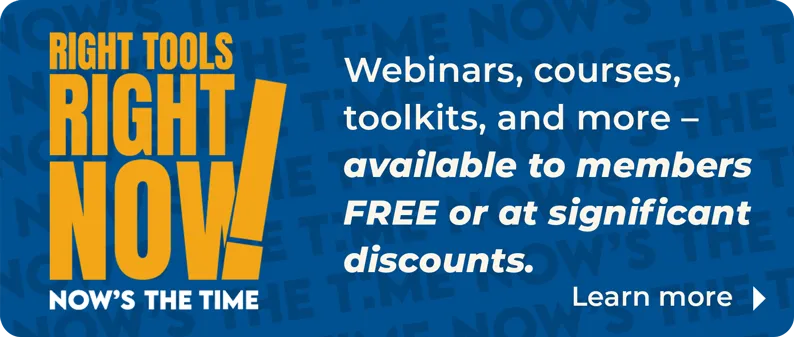
The DiSC assessment is a powerful tool for leaders. The assessment helps leaders understand people’s behavioral preferences and determine the best way to communicate with them.
That’s why a breakdown of the DiSC model and its relevance to real estate industry leaders was the subject of a recent Broker Power Hour, hosted online by the National Association of REALTORS®. Here are highlights of the March 12 presentation:
The DiSC Model and Real Estate Leadership
The DiSC model is a popular assessment tool in real estate because real estate sales—both the consumer-facing side and the broker-to-agent side—is a relationship business. Success hinges on good communication, which means relaying information in a way that works for the recipient. The DiSC model divides people into four styles:
Dominance – Those in the dominance category don’t need much fluff or small talk in a conversation. They’re direct and results oriented.
Influence – Typically extroverts, the influencers of your office are outgoing and enthusiastic. They thrive in social situations.
Conscientiousness – Precision and accuracy are important attributes to the conscientious members of the office. They’re usually introverts and like to maintain privacy.
Steadfastness – Great communicators, the steady personalities in the group are humble and tactful. They’re also patient and don’t like to be the center of attention.
Why Use DiSC as a Broker
For brokerage leaders, the DiSC assessment can be a useful tool in managing the offices, recruiting, and retaining agents. Effective brokers recruit and coach on a regular basis, and understanding an agent’s communication style can aid in making sure the information is delivered in an effective way.
Communication style is also important in conflict resolution. Some people need more empathy and information delivered in a softer way. Others want a more direct communication style so that they can learn what the issue is and how to resolve it.
The DiSC model is also useful as a self-assessment tool that brokers can use to learn more about how they personally take in and disseminate information.
When brokers understand the various communication styles in their offices and learn how to deliver information based on those styles, it creates a culture of understanding and belonging, which can lead to agent retention.
Advocacy Matters
Members of NAR’s advocacy team kicked off the Power Hour with a rundown of the association’s priorities for 2025.
The association’s federal advocacy team works with members of Congress, congressional staff and the presidential administration, said Joe Harris, vice president, government advocacy at NAR. The advocacy team “works with stakeholders with the goal of shaping some commonsense policy.”
One of the team’s consistent priorities is to advance the dream of homeownership. The team focuses on attaining bipartisan support for policies that help make homeownership possible for all who seek it.
Where Advocacy is Focused in 2025
Housing affordability. Rising prices and fluctuating interest rates make it difficult for many who want to enter the market. NAR’s advocacy team is focused on supporting measures that would ease that burden, like increasing housing supply, maintaining a healthy mortgage market and easing regulatory burdens where possible.
Tax reform is already in the discussion stages, and Harris said the advocacy team is focused on working with politicians to make sure any reform “prioritizes homeownership.”
Flood insurance. Ryan Rusbuldt, director of government advocacy and operations for NAR, noted that the government spending bill passed in March 2025 included the extension of the National Flood Insurance Program. NAR has consistently fought to ensure transactions aren’t delayed or derailed by interruptions to the program.
Inventory. Rusbuldt said the team is looking for creative ways to increase housing inventory, which includes looking at everything from federal tax incentives for development to local initiatives to ease zoning restrictions.
Vijay Yadlapati, director of government advocacy for NAR, noted that NAR is focused on supporting tax provisions that encourage ownership and the development of housing, such as capital gains relief and the low-income housing credit. The association is advocating for a number of bills in the current Congress aimed at increasing and improving inventory, including the Neighborhood Homes Investment Act, which would provide tax incentives for rehabbing homes.
In the fast-paced Washington environment, where constant policy and legislative changes could potentially impact day-to-day brokerage operations, as well as the real estate industry more broadly, it's invaluable for NAR to cultivate a strong and productive collaboration with the president’s team, his cabinet, and members of Congress.
Attend the Next Broker Power Hour
Every other month, the National Association of REALTORS® hosts an hour-long webinar catered to the needs and concerns of brokers. Access slides and notes from the March 12 session, as well as recordings of past sessions, at broker.realtor. There, you can also sign up for the next Broker Power Hour, “Mental Wellness Awareness for Leaders,” scheduled for May 21. NAR members can attend the sessions at no charge.









